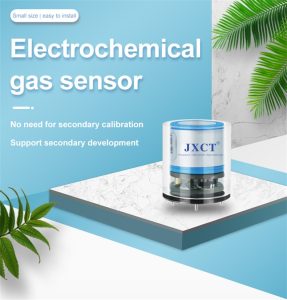Gas sensor technology has undergone significant advancements in recent years, revolutionizing the field of environmental monitoring. With increasing concerns about air quality and its impact on human health, accurate and real-time detection of pollutants has become essential. This article explores the latest advancements in gas sensor technology and how they are transforming environmental monitoring practices.

Miniaturization and Portability:
-
One remarkable advancement in gas sensor technology is the miniaturization of sensors, making them smaller, lighter, and more portable. Traditional gas sensors were bulky and required complex wiring, limiting their applications. However, the development of miniaturized gas sensors has allowed for their integration into wearable devices, mobile phones, and unmanned aerial vehicles (UAVs). These portable sensors enable on-the-go monitoring of air quality in various environments, including indoor spaces, public areas, and remote locations.Wireless Connectivity and IoT Integration:
- Gas sensors now often come equipped with wireless connectivity options, allowing seamless integration with the Internet of Things (IoT) infrastructure. This connectivity enables data transmission in real-time to centralized servers or cloud platforms, where it can be analyzed and visualized. By integrating gas sensors with IoT networks, comprehensive air quality monitoring systems can be established, covering large geographic areas and providing valuable insights for decision-makers and the public.
- Selectivity and Sensitivity Improvements: Advancements in material science have led to the development of gas sensors with improved selectivity and sensitivity. Traditional sensors often struggled with cross-sensitivity, where interference from other gases affected the accuracy of measurements. However, modern gas sensors employ innovative materials and designs that enhance their selectivity, allowing them to distinguish between different gases. Additionally, these sensors exhibit increased sensitivity, enabling the detection of even trace amounts of pollutants in the atmosphere.
- Multi-Gas Detection Capabilities: Earlier gas sensors were typically designed to detect specific gases or limited ranges of pollutants. However, recent advancements have resulted in the development of multi-gas sensors capable of detecting multiple gases simultaneously. These sensors utilize advanced sensor arrays and sophisticated algorithms to identify and quantify various pollutants present in the air. The ability to detect multiple gases with a single sensor enhances monitoring efficiency, reduces costs, and simplifies data collection and analysis.
- Real-Time Monitoring and Data Analytics: Gas sensors now offer real-time monitoring capabilities, providing instantaneous information about pollutant concentrations. This real-time data is invaluable for timely response and decision-making. Moreover, advancements in data analytics have made it possible to process large volumes of sensor data efficiently. Machine learning algorithms and artificial intelligence techniques can analyze gas sensor data in real-time, identify patterns, and generate actionable insights. These insights aid in understanding pollution sources, assessing their impact, and formulating effective mitigation strategies.
- Integration with Air Quality Models: To gain a comprehensive understanding of air pollution, gas sensors are being integrated with air quality models. Gas sensor data can be combined with meteorological information, emission inventories, and dispersion models to create accurate and detailed air quality assessments. This integration enables precise mapping of pollution hotspots, forecasting the dispersion of pollutants, and evaluating the effectiveness of pollution control measures. Such comprehensive modeling provides valuable information for policymakers and urban planners.
- Remote Sensing and UAV Applications: Advancements in gas sensor technology have facilitated its integration with remote sensing technologies and UAV platforms. Remote sensing techniques, such as satellite imagery and aerial photography, provide a broader spatial coverage for environmental monitoring. Integrating gas sensors with UAVs allows for localized pollution monitoring in areas that are otherwise challenging to access. These applications enable comprehensive monitoring of large areas, including industrial sites, forests, and coastal regions.
- Real-Time Alerts and Early Warning Systems: Gas sensors equipped with real-time alert features enable the implementation of early warning systems for hazardous pollutant levels. When pollutant concentrations surpass predefined thresholds, the sensors trigger alarms or notifications, alerting individuals and relevant authorities. Early warning systems are crucial for protecting public health and enabling prompt actions to reduce exposure. These systems can be particularly beneficial in industrial settings, where immediate response is necessary to prevent accidents and mitigate environmental risks.
- Indoor Air Quality Monitoring: Indoor air quality is a significant concern as people spend a substantial amount of time indoors. Advanced gas sensors have made indoor air quality monitoring more accessible and effective. These sensors can detect various indoor pollutants, including volatile organic compounds (VOCs), formaldehyde, carbon dioxide (CO2), and radon. By monitoring indoor air quality, individuals can take proactive measures to improve ventilation, manage sources of pollution, and ensure a healthier living environment.
- Smart City Initiatives: Gas sensor technology plays a crucial role in the development of smart city initiatives focused on improving environmental sustainability. Integrating gas sensors into urban infrastructure enables real-time monitoring of air quality in different parts of the city. This information can be utilized to optimize traffic management, implement targeted pollution reduction strategies, and enhance overall urban planning. Gas sensors contribute to the creation of smart and sustainable cities that prioritize the well-being of their residents.
Conclusion:
Advancements in gas sensor technology have revolutionized environmental monitoring practices. Miniaturization, wirele

ss connectivity, improved selectivity and sensitivity, multi-gas detection capabilities, and integration with IoT networks have made gas sensors more versatile and efficient. Real-time monitoring, data analytics, and integration with modeling techniques have enhanced the accuracy and usability of gas sensor data. These advancements facilitate better understanding of air pollution, timely decision-making, and the development of effective pollution control strategies. Gas sensors contribute significantly to building a sustainable future by enabling us to monitor, manage, and improve our environment's air quality.
 : +86 155 8830 2704
: +86 155 8830 2704 : jxdziot@gmail.com
: jxdziot@gmail.com
